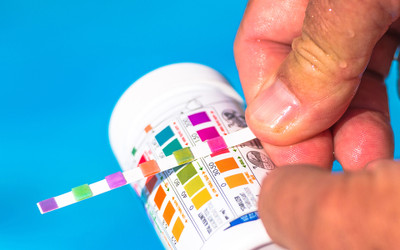How to Maintain Your Pool's pH Levels
27th Feb 2023
Maintaining your pool’s pH levels is essential for keeping the water clean and safe for swimming. A pH level that is too high or too low can irritate skin and eyes and may even damage the pool’s equipment. As a swimming pool owner, it’s important to know how to properly test and adjust the pH levels in your pool water.
What is pH?
pH refers to the level of acidity or alkalinity of your pool water. A pH level of 7 is neutral, while a level below 7 is considered acidic, and a level above 7 is considered alkaline. The ideal pH level for a swimming pool is between 7.2 and 7.8.
When to Test pH Levels
You should test the pH levels of your pool water at least once a week - more often if it has rained or you’ve been doing lots of swimming. Regular pool testing will help you to detect any changes and make the necessary adjustments before it becomes a problem. There are several ways to test the pH level of water in your pool, including using test strips, a digital pool tester, or a pool testing kit.
How to Test pH Levels
When using pool test strips, dip the strip into the pool water for a few seconds and then compare the color on the strip to the color chart provided. A digital tester is more accurate and easier to use. Simply dip the tester into the pool water and read the pH level from the digital display. Pool test kits are a more comprehensive solution. They come with a variety of tests to check for pH levels, chlorine levels and other aspects of your water chemistry.
How to Adjust pH Levels
You will use a water balancer to bring your pool water’s pH levels into the proper range. If your pool’s pH level is too low (acidic), you can add a pH increaser such as sodium carbonate to raise the pH level. If the pH level is too high (alkaline), you can add a pH decreaser such as sodium bisulfate to lower the pH level. It’s important to follow the instructions on the product carefully, as adding too much can cause the pH level to become unstable.
It is necessary to keep an eye on the pH levels of your pool to make sure the water remains hygienic and suitable for swimming. By testing regularly, you can detect any changes and make adjustments before it becomes a problem. Finding the testing method that works best for you can help you maintain the quality of your pool water and ensure a safe and enjoyable swimming experience.
You may also like:
